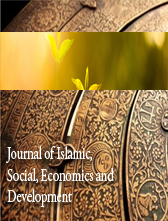THE POTENTIAL IMPLEMENTATION OF CONTEMPORARY WAQF TOWARDS PEOPLE’S RELIGIOUS SCHOOLS IN MALAYSIA
Abstract
The implementation of contemporary waqf as the source of funding for People’s Religious Schools (SAR) has drawn the attention of various parties especially SAR administrators. Waqf is an instrument that can help cater the needs of the PRS administrators in getting a continuous source of fund. However, up until today, the implementation of the contemporary waqf instrument in PRS still lacks the response it deserves among PRS administrators. Leaning on this phenomenon, this study is carried out to achieve two goals. The first is to identify the waqf instrument available in PRS. The second goal is to identify the potential implementation of the contemporary waqf in PRS. This study serves as a qualitative study involving data collection from secondary sources gathered from documents such as books, magazines, journals, articles, and others. The data are then analysed using content analysis. Based on observation, waqf has a great potential to assure the continuity of PRS financial fund, especially involving the implementation of contemporary waqf. Some of the contemporary waqfs that have the potential to be executed in PRS are waqf of land property, lot waqf, waqf of shares, cash waqf and others. The implementation of this contemporary waqf can guarantee a good financial management and stability to cater for the funding of operations, development of the infrastructure education programs as well as the provision of basic facilities or amenities.













